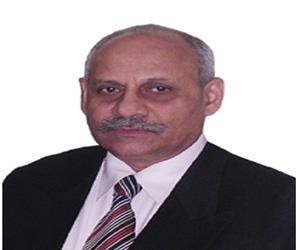Harnessing prevailing technologies give boost to war waging efforts. The present digital environment, has introduced a new dimension in modern warfare – that of cyber operations. This has multiple effects, an opponent now seeks to dominate or control the other’s operational, production and logistics systems in addition to presenting wrong information. The digital environment has also transformed nature of propaganda which has always been part of hostile actions.
Both are non combative means of exacerbating uncertainty. While cyber operations create an overwhelming sense of caution and insecurity, propaganda seeks to dilute the effectiveness of own channels, raising doubts over ‘what to believe and how much’ about the prevailing situation. Even when active violence stops, the effects of both persist in the target’s mind.
Some aspects of Cyber operations and Propaganda are discussed in general and more selectively in context of the current Israel Hamas war.
Cyber Operations
Today all nations employ their anonymous cyber warriors drawn from both combatants and civilians to either gather intelligence or interfere with and degrade adversary capabilities. This effort, conducted in both peace and war targets critical infrastructure, economic, logistical, medical, transportation or military systems of the adversaries. They are unique in that they remain deeply buried in the target’s systems and require special detection methodologies. The target either remains unaware or is unwilling to admit having become prey, lest such acknowledgement reveal more vulnerability.
Apart from Government and military, other civilian users e.g. aviation, communications, energy, industry, logistics, medicine, navigation, shipping, trade et al operate in cyber space. Any interference in servers of afore mentioned impacts all, compounding difficulties in operating and differentiating between civilian and military targets. To cite an example, ambulances and logistics fleet management use geo locating services provided by satellites which have military uses.
Distributed Denial of Service (DDoS) and Wiper malware are two types of Cyber attacks discussed here. The DDoS affect a website by flooding it with numerous requests per second). DDoS is relatively unsophisticated and marginally impacts national security. However they disconcert the general public. The Wiper malware overwrites data of a file, renames it or reads random strings. Other cyber offensives include Phishing, Supply chain; Code Injection attacks etc also exploit the vulnerabilities in a network or computer but are not presently discussed.
The Washington based Atlantic Council labelled Hamas cyber capability as nascent but not to be underestimated. Hamas cyber capability is reportedly augmented by Iran. In the first few weeks after the Hamas attack, Israel networks experienced a 52% increase in cyber-attacks aimed to frighten the population.
The cyber attacks on Israel till end November are discussed. DDoS attacks from ‘Team_insane_Pak’, ‘Anonymous Sudan’ and the pro Russian ‘Kilnet’ blacked out the Jerusalem Post for two days. Wiper malware like ‘Bibi’ effected Windows and Linux systems. Israelis use an open source “Red Alert” to receive notifications about an incoming rocket attack. Instead the pro Palestine ‘Anonymous Ghost’ exploited a vulnerability and sent them fake messages about ‘incoming nuclear bombs’! This was similar to the Russian misinformation seen in Ukraine war. ‘Cyber Toufan’ accessed large lists of companies and national entities websites through its attacks on Ikea, Signature IT and Mac Security (a prominent geo intelligence agency) in Israel.
Israel’s own robust cyber security detected and foiled many such intrusions. On 27 October, Israel blocked the internet connectivity in Gaza for 34 hours. When restored, it was at 15% of its usual rate. Hamas projected this as Israel denying ambulances to reach the injured.
The cyber offensives directed at Israel also targeted its allies. The EU suspending aid to Palestine led to many cyber-attacks directed against European nations. France faced more than 300 DDoS attacks from ‘Mysterious Team Bangladesh’ and ‘Team_Insane_Pak. The e mails of US Commerce Secretary and other officials were broken into by Chinese hackers. The website of UK PM Rishi Sunak was attacked by ‘Sylhet Gang SG’. Cyber attacks were directed against two Bahrain ministries, German Police, Canadian agencies, British military and India (230 attacks).
Propaganda
The essential nature and aim of propaganda - to influence and modulate the target’s thinking to align with perpetrators projections - remains unchanged despite the periodic re-designations like Psyops, Influence Operations, Information Warfare, or Perception Management. The stronger side portrays its strengths to impress upon the opponent the futility of his resistance and influence him to reduce his loss and casualties by changing or abandoning his plans and actions. The weaker party seeks to boost morale, divert attention of own population away from its limitations by portraying the other as devilish and to gain sympathy from external quarters.
Carefully crafted content, timeliness, contextual relevance and credibility determine success of any propaganda. Interestingly, the propagator need not always share absolute truths, partial or half truths help him more in wining propaganda wars. The target counters these through another set of truths, half-truths. Thus both sides manipulate the same data to build their respective narratives.
The 1991 Iraq war introduced a new global dimension telecasting raw, live footage from warzone directly into living rooms. This changed the earlier model of experts designing and disseminating propaganda. Today, anyone with a cell phone and internet access can create and share his ‘story’. Global connectivity, social media, internet and digital devices delivering content in real time has exponentially increased the reach, ease, speed, visual effects of such unverified content. Often recipients are left guessing the truth, as documented below.
Israel Information Operations
The initial videos, especially those showing decapitation and parading corpses of women depicted Hamas brutality. These galvanised favourable internal and external opinions for Israel delivering a strong response to Hamas.
Prior to initiating its offensive, Israel laid the groundwork for the war through hasbara meaning “public advocacy” or “to explain”. On 10 October, Israel conducted a group of international journalists, including Elon Musk and Jerry Seinfeld to Kibbutz Kfar Aza where Hamas had killed more than 50 people. The site amply showed the killings with burnt corpses still lying around. These aimed to create the “window of legitimacy” for Gaza invasion. Ironically, the hasbara effort now struggles in the face of IDF inflicting massive civilian casualties and runs at variance to the Israelis' own propaganda.
Israel aired a voice intercept wherein a gleeful Hamas soldier boasted killing 10 Jews, to his family.
Israeli government spent more than $2 million on online ads and campaigns on platforms like TikTok, X, YouTube, Facebook, Instagram. Worldwide, journalists and politicians were shown a 43-minute video of the Hamas atrocities, much of it filmed on the terrorists’ own cameras. In a 07 November video, Israel attempted to get the world identify with Hamas’s victims - “Imagine it was your grandmother being kidnapped from her home and paraded around by terrorists.” IDF videos showed tunnels beneath Al Shifa hospital and other civil centres portraying them as Hamas hideouts, control centres and weapons storage. A video also showed that the hospital had a box of dates and two copies of the Quran.
Later, Israel advised the population to evacuate Gaza. It issued a map dividing Gaza into 623 sections telling people which sections were safe and which to evacuate. It posted videos, graphics, airdropped leaflets in Arabic, made phone calls, sent text messages warning civilians to flee to southern Gaza. One TikTok video showed raw footage of IDF officers deciding to delay striking a densely populated civilian area.
Since Hamas embeds its military installations within densely populated Gaza neighbourhoods, Israel tried to demonstrate its desire to avoid civilian casualties and defend its legitimate need to attack civilian areas. Few complied. Thereafter, from Israel viewpoint, any Gaza civilian casualties would be tragic and inescapable.
On Dec. 10, it released photographs of surrendered Hamas cadre, stripped to their underwear with a purpose to demoralize Hamas cadre and show Israel winning on the battlefield. It was a calculated step knowing well that it would invite international censure on humanitarian grounds.
The IDF recruited reservists and media experts, doubling its international press office and to communicate in 14 languages. Israel deployed its small, secretive unit known as the “Influence Unit” — to conduct its psyops, plant stories in the press for managing perceptions and sending signals to Hamas.
In early December, senior developers from Tel Aviv’s top tech companies met with Israeli government officials and international communications consultants for a “Hasbara Hackathon” towards developing digital tools, including a sentiment meter for gauging if opinion of online audiences was resonating with IDF influence initiatives. The tool also was to help modify the contents if the IDF spokesman makes a mistake or the message backfires.
Hamas Information Operations
Initially Hamas flooded SM with its taking hostages, killings and parading “Israeli Rear Admirals, Brig Gens and Lt Gens captured by Hamas”. Thereafter it abstained from direct, extensive propaganda possibly due to the repulsive content involved. Instead it played the victim card showcasing the devastation wrecked by relentless IDF offensive. This mobilized world opinion against Israel’s actions. Ghazi Hamad, a senior Hamas official, told TIME in the aftermath of the attack that “Now they want to destroy everything. This will cost them, cost them very much.” TIME found Pro-Palestinian content prevailing on social media channels, particularly TikTok in that for every pro-Israel post on TikTok, there were 36 pro-Palestinian posts.
Hamas did broadcast a video showing two old hostages appealing to Israel to get them freed.
The proliferation of smartphones inside Gaza’s dense urban environment transmitted more real-time data than any contemporary war. The horrors of Gaza war were extensively put on social media (SM). Many young Gazans chronicled deaths of friends and family, obliteration of homes and schools, desperate scramble for food and medical supplies and their journey southwards. These received daily responses in tens of thousands of comments with many anxiously checking to make sure they are still alive.
According to the Tel Aviv-based social media intelligence company, Cyabra, many of the 40,000 fake accounts on Facebook, Instagram, TikTok and X were created before the 07 October attack. Today they pump out hundreds of posts per day with pro-Hamas narratives. Cyabra data showed more than 25% of the accounts engaging in the debate were fake.
International Dimensions
Cyabra researched that bots showing graphic imagery content originated in Pakistan, thereby side stepping the ban on Hamas on FB and X. One in three accounts posted digital images 24 hours after the Al Ahli attack.
According to the Institute for Strategic Dialogue, accounts tied to Russia, China and Iran sought to capitalize on the conflict to spread anti-Western propaganda. Russian and Chinese government accounts used state media and major social media platforms to support Hamas, denounce USA and Israel. Putin met Hamas leaders after the war began and also claimed that western intelligence services were behind the Dagestan airport attack on Jews. A Russian overseas news outlet – Sputnik India – said that US supplied the bomb that destroyed Al Ahili hospital. China projected itself as neutral peacemaker.
Iranian state-linked accounts glorified Hamas’s attack as an act of resistance against a “neo-colonial” power and amplified narratives accusing the U.S. of being responsible for Palestinian suffering.
The speed with which Hamas and its supporters put out misinformation compounded the problem and left the Israelis often playing catch up. Videos posted by young Israeli soldiers smashing children’s certificates in Gazan schools or filming themselves throwing a stun grenade into a mosque or the outrage on the Hamas cadre clad only in underwear were projected as examples of Israeli callousness.
Truth Testing
Researchers examined the contents of many videos aired alleging that both sides used ‘crisis actors’ to misrepresent truths. Some findings are:-
The video of a wounded Palestinian man on a hospital bed removing his bandages in presence of his mother was touted as stage played. In actuality he removed his dressings to assure his mother that his injuries were not serious.
A video of dirt and fake blood being applied to a young girl on stretcher was found to be make-up being applied for a Lebanon film ‘The Reality”. Israel videos, dramatized by actors, showed a woman seeking to report sexual violence by Hamas militants. In another, a tearful nurse of Al Shifa hospital warned Gazans to heed the call of the IDF and flee southwards. Her immaculate white dress and flawless appeal in English was found repeating IDF themes of Hamas taking over the hospital and stealing fuel and morphine. The video was later taken off.
The claim that crowds assembled in Puetra de Sol Plaza in Madrid and in universities of LA and Pennsylvania to protest against Israel were proven false. The Madrid protest was actually against Spain’s government proposal to grant amnesty to Catalan rebels in lieu of their supporting the new laws. The protestors seen in the Penn university (16 October) and UCLA (26 October) were not calling ‘for Jewish genocide’ but were found chanting “Israel, Israel, we charge you with genocide”.
A video showing an Israeli tank soldier thrown to ground in an air attack was a scene from the computer generated game “Squad”. The collage showing an injured man was a collection of nine photos of different men.
On 17 October, major news channels which initially took Hamas’s word about Israel airstrike on a hospital retracted their coverage on finding that it was a misfired Palestinian Islamic Jihad missile.
These are just few examples of both sides altering truth to shape the perceptions of the audiences. Eylon Levy, an Israeli government spokesman, described these as being “the stakes of the war itself.”
Conclusion
Social media (SM) has changed the way information is gathered and consumed. People have shifted away from legitimate and credible channels for variety of reasons. The speed of dissemination, flooding of information and lack of time and interest to verify every bit on SM pose new challenges to authenticate information. It does not matter that too many ‘hot takes’ are dished out as ‘breaking news” facilitating the rapid spread and acceptance of false information making it difficult to find credible news.
Various groups, operating under actual or assumed identities, contributed and demonstrated their collective impact on the Israel Hamas confrontation. A new phenomenon emerged wherein unconnected players formed alliances to conduct cyber offensives and propaganda. This would continue into the future.
External players and channels like TikTok offer a diverse range of perspectives that both augment and complicate the narratives. Voice overs, Deep fakes and AI tools will further obfuscate reality. It thus becomes imperative to verify reports before accepting all the content on SM.
Cyber operations can make huge impact if they bleed into kinetic war domain. Imagine the effects on traditional kinetic operations if a player turns off critical infrastructure (electricity, supply chains, water, and communications, Port operations, Media, health care and financial systems).
Propaganda, as always, remains an arsenal to soften resistance, influence public opinion, sow confusion, impact timing of responses or cause deployment of disproportionate resources to safeguard critical infrastructure. Today’s environment promotes its propagation more than ever before.
States need to create, enable and task an organization to proactively safeguard own interests. The public needs to be sensitized against accepting any SM content at face value and blindly repeating the content using ‘fastest fingers first’. All bits of information will need distilling to find the truth. An international alliance to work towards this end will be worth considering.
(The paper is the author’s individual scholastic articulation. The author certifies that the article/paper is original in content, unpublished and it has not been submitted for publication/web upload elsewhere, and that the facts and figures quoted are duly referenced, as needed, and are believed to be correct). (The paper does not necessarily represent the organisational stance... More >>
Image Source: https://www.trendmicro.com/content/dam/trendmicro/global/en/ciso/thumbnails/22/cyber-crime-group-types.png











Post new comment